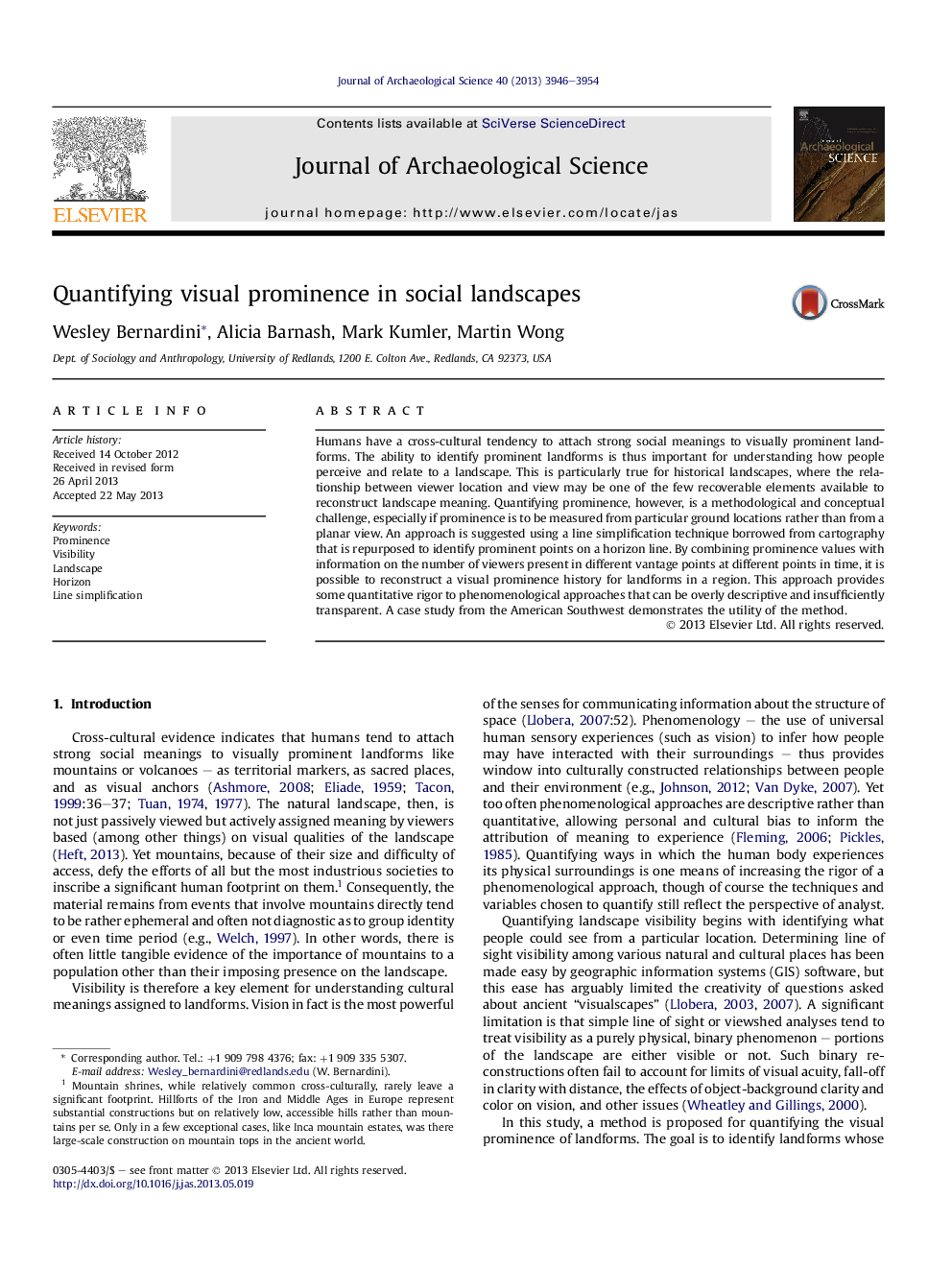| Article ID | Journal | Published Year | Pages | File Type |
|---|---|---|---|---|
| 10498880 | Journal of Archaeological Science | 2013 | 9 Pages |
Abstract
Humans have a cross-cultural tendency to attach strong social meanings to visually prominent landforms. The ability to identify prominent landforms is thus important for understanding how people perceive and relate to a landscape. This is particularly true for historical landscapes, where the relationship between viewer location and view may be one of the few recoverable elements available to reconstruct landscape meaning. Quantifying prominence, however, is a methodological and conceptual challenge, especially if prominence is to be measured from particular ground locations rather than from a planar view. An approach is suggested using a line simplification technique borrowed from cartography that is repurposed to identify prominent points on a horizon line. By combining prominence values with information on the number of viewers present in different vantage points at different points in time, it is possible to reconstruct a visual prominence history for landforms in a region. This approach provides some quantitative rigor to phenomenological approaches that can be overly descriptive and insufficiently transparent. A case study from the American Southwest demonstrates the utility of the method.
Related Topics
Physical Sciences and Engineering
Materials Science
Materials Science (General)
Authors
Wesley Bernardini, Alicia Barnash, Mark Kumler, Martin Wong,
